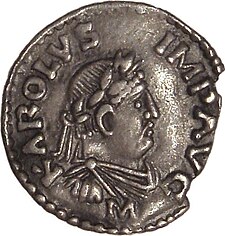Dates: Writing them should be easy
How can something as simple as writing a date
 turn into such a problem?
turn into such a problem?Advertisements in particular seem to be the worst offenders, but dates somehow have become a mystery to far too many people in all levels of communication.
What am I talking about? Two things, actually:
1) The incorrect placement of AD
2) The incorrect use of ordinal numbers in place of cardinal numbers
1) Let's start with AD. It's a term we read and use quite often, but do we even know what it means? For that matter, how many of you use p.m. and yet have no idea what the letters stand for (post meridiem, or after the meridiem or middle point, which noon is considered in a calendar day)?
The key to any good communication is understanding what you are using in that communication. You shouldn't be using terms and abbreviations if you don't know what they mean.
AD is Latin for anno Domini, which means year of the Lord (anno is year, Domino is Lord). It indicates the years in the Christian era, or since the "year of the Lord" (the accepted date of the birth of Jesus Christ, using the Gregorian calendar). Once you know that, it should be painfully obvious that AD belongs BEFORE a date, never after.
For example, you wouldn't say we are now living in "2013 the year of the Lord," or that Charlemagne
 was crowned emperor in "800 the year of the Lord." If you read those out loud, you hear how ridiculous they sound. Yet that's exactly what it means when anyone writes 2013 AD or 800 AD. The wording is backward. This is the year of the Lord 2013 (AD 2013) and Charlemagne was crowned in the year of the Lord 800 (AD 800).
was crowned emperor in "800 the year of the Lord." If you read those out loud, you hear how ridiculous they sound. Yet that's exactly what it means when anyone writes 2013 AD or 800 AD. The wording is backward. This is the year of the Lord 2013 (AD 2013) and Charlemagne was crowned in the year of the Lord 800 (AD 800). So why we so often see AD wrongly placed AFTER the date rather than before? It's partly ignorance -- not realizing what AD means -- but largely our archenemy, that insidious malady I call Parrot's
Disease,
 that habit of blindly copying what we see without ensuring it is correct.
that habit of blindly copying what we see without ensuring it is correct.If you learn only one thing from reading my blog, at least let it be this: Be skeptical and look things up to be sure! Do not trust myths and rumors or repeat things you have seen or heard, no matter how common. This is how such atrocious writing becomes so common. Be uncommon and be sure something you write is correct. Don't just parrot what you read and hear!
2) As for ordinal numbers, the key when it comes to dates is realizing that although we may use them in pronouncing dates, we shouldn't use ordinal numbers in writing them. In other words, we may call today Sept. 13th when saying it aloud, but the only correct way to write it is Sept. 13, 13 being a cardinal number.
Ordinal? Cardinal? Confused? Here's an easy way to sort them out: Think order (or ranking) for ordinal, as in He bats first in the order or Jane placed the sixth order for a cake this hour and will have a long wait or In order of importance, showing up on time ranks first.
For cardinal, merely think of cards, as in a deck of cards. The numbers on a deck of cards are 1, 2, 3, 4, 5, 6, 7, 8, 9 and 10, all cardinal numbers. All the regular numbers we use (0-infinity) are called cardinal numbers, and those are the numbers we should use to write nearly all dates.
The only exception would be the construction we use in more informal conversation, such as The party will take place on the 12th of October. But as you can see, that's not formally writing a date as much as it is describing a particular moment in time. In other words, on a birthday party invitation you're not likely to see when: the 12th of October. Instead, you'll see when: Oct. 12.
When writing a date (such as the kind you find on folios at the top of every page in a newspaper), use only cardinal numbers: Jan. 1, Feb. 29, March 3, April 15, Aug. 30, Dec. 25 and so on. NOT Jan. 1st, Feb. 29th, March 3rd, etc.
It's time to wrap it up. My next post will depart from our usual lessons to discuss/promote another date: Sept. 19. It's
the annual
 Talk Like A Pirate Day! Stay tuned, matey!
...
Talk Like A Pirate Day! Stay tuned, matey!
... 
No comments:
Post a Comment